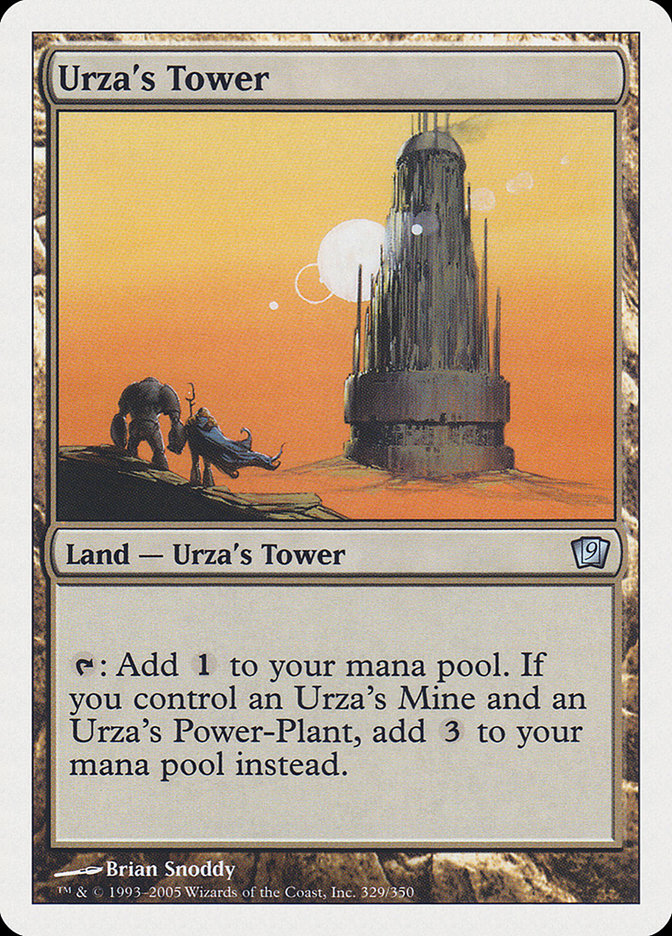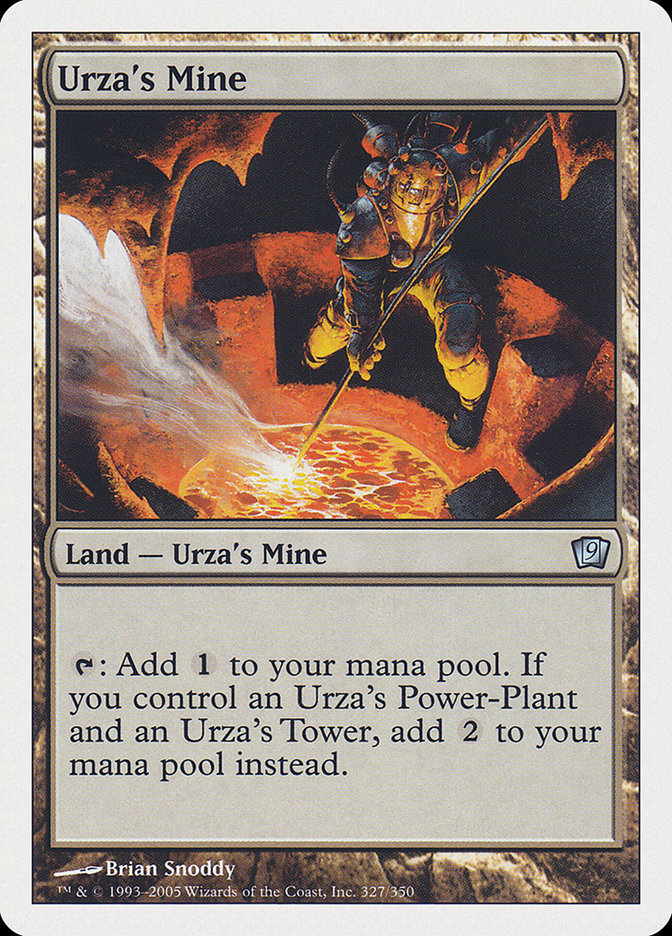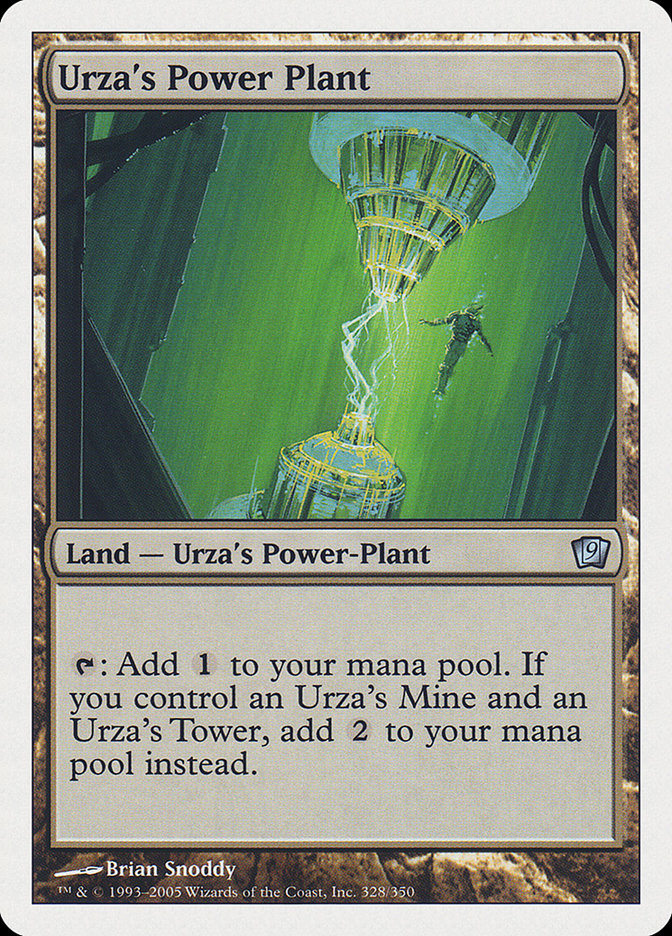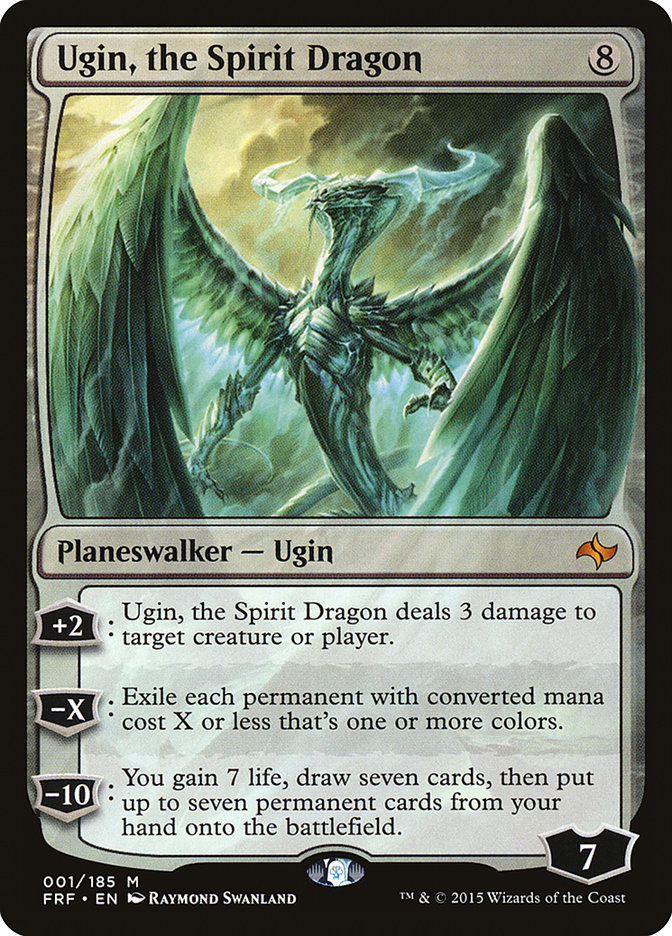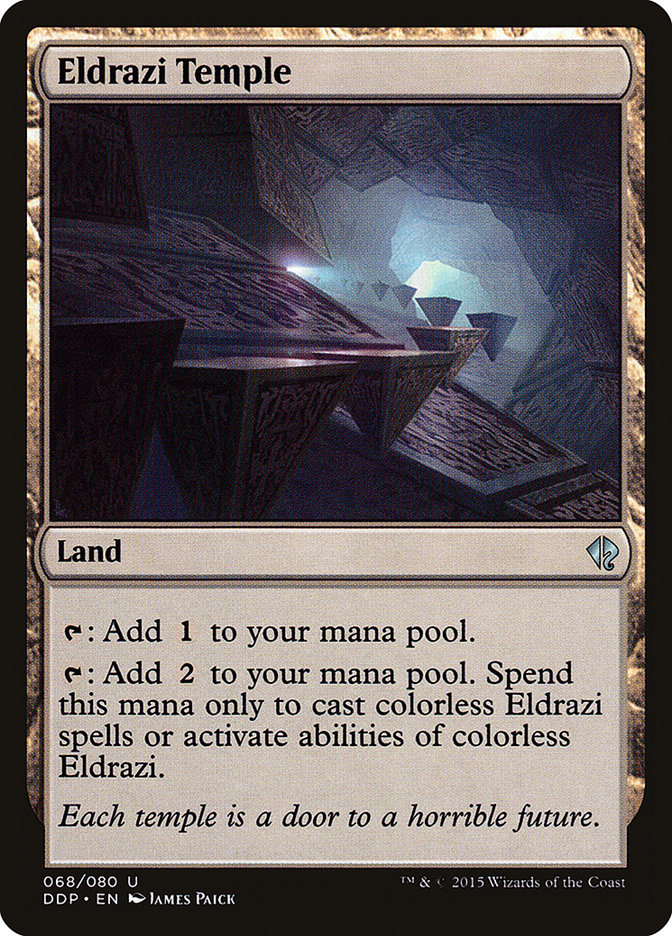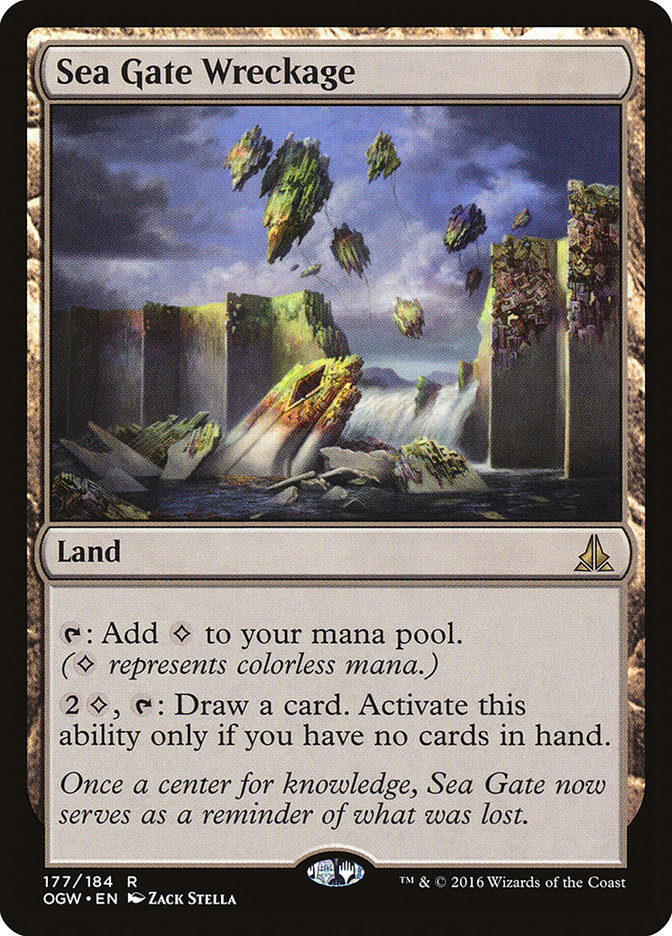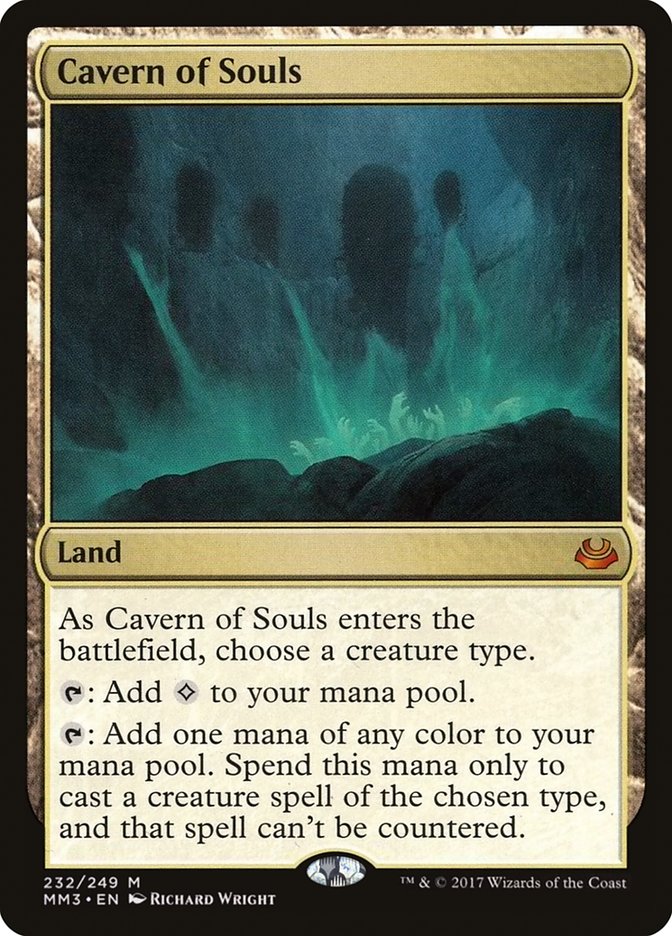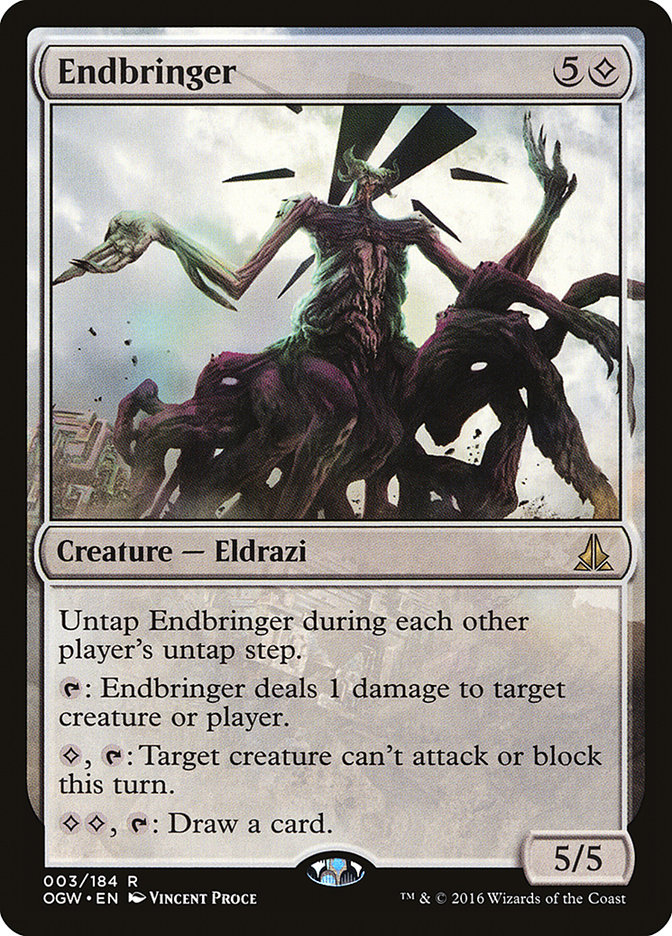Creatures (18)
Planeswalkers (2)
Lands (24)
Spells (16)

Eldrazi Tron. A deck that for some reason has never gotten the respect it
deserves, something that has been common of various Tron decks in Modern’s
past. I’ve heard plenty of well-respected players have opinions on Eldrazi
Tron that vary from the deck being “bad” to “unplayable,” but these players
misunderstand the role Eldrazi Tron plays in Modern’s current metagame. The
deck looks straightforward enough, so what’s with the misconceptions?
The three Urza’s Tron lands are easily the most powerful part of the deck
and always have been. When they’re online they lead to incredible draws
that are difficult for any deck to keep up with, but frankly, most games
you won’t have the luxury of gaining obscene amounts of mana from the
deck’s namesake lands. Many people are afraid of these games and think the
deck has “clunky” draws when Tron isn’t online. In reality these are the
majority of games. You need to embrace them. You shouldn’t be throwing
hands out aggressively to try to get Tron online because Eldrazi Tron can
function perfectly well without it. The fact is most real games of Magic
you play are ugly with both decks not having their best opening hands or
draws, and Eldrazi Tron can win a majority of its games without the Tron
lands active, and you shouldn’t be scared of not having all three of them.
Bad news: I don’t believe these cards are playable in the archetype. Sure
they feel amazing to cast and lead to fun stories to tell your friends when
these bombs completely change the outlook of a game, but the cost of having
these cards stuck in your hand in the early game is simply too high.
With Eldrazi Tron you need to be able to stay alive during the first five
turns and then go over the top of your opponent, and these cards not only
don’t help you survive in the early game, but also aren’t necessary to win
the late game. I don’t want to rely on having Tron active to cast my spells
since it’s somewhat rare, and especially not when the most popular deck in
the metagame has access to a one-mana unconditional counterspell in their
sideboard.
Karn Liberated is currently the most expensive card in my Eldrazi Tron
list, and I’ve probably cast it using seven lands as many times as using
three. Going more expensive than that just isn’t reliable or necessary.
Why is Eldrazi Tron the Best Deck in Modern?
I guess I’ve made that claim now, so why do I honestly think that Eldrazi
Tron is the best choice moving into #gpvegas this
weekend?
First off, every game you get to do something. Sure that thing isn’t always
spectacular–maybe your first play is turn 3 Matter Reshaper–but the
amount of games you automatically lose to your manabase is extremely small.
You never have problems with having the right color of mana and all of your
lands come in untapped. Compare this to Grixis Death’s Shadow where I won
three games at #scgchar simply
from my opponent not having the correct color of mana available to cast
spells. This may seem like a small thing, but having a chance in every
single game over fifteen rounds is a big deal.
Some percentage of games you have turn 3 Tron and a nearly unbeatable draw.
It’s not common, but combine this with other decks losing a percentage of
games to their manabase and you start each tournament off with a much
higher than normal win percentage due to variance compared to other decks.
You have a favorable Death’s Shadow matchup. This is a statement I haven’t
said about any deck before, but I honestly think my current iteration of
Eldrazi Tron does. I’ll get more into this matchup during the sideboard
guide later, but I fully expect Grixis Death’s Shadow players to tune their
lists for #gpvegas
to be more prepared for the matchup. I expect three Ceremonious Rejection
to be the norm instead of only two, which most players I played this past
weekend had.
You have a favorable matchup against the other top decks of the format,
such as Dredge, Abzan, and Jund. These three decks are three of my favorite
decks to play against, as Eldrazi Tron matches up perfectly against the
three-color midrange decks and has an abundance of hate cards against the
format’s most popular graveyard strategy.
Counters Company is the other popular top tier strategy. Although the games
against them are usually completely lopsided one way or the other, it’s a
pretty close matchup.
Your worst matchups are being pushed out of the metagame by Grixis Death’s
Shadow. Thankfully, the combination of Thoughtseize, Stubborn Denial, and a
fast clock is the perfect way to fight Ad Nauseam, Scapeshift, and green
Tron decks, which are probably Eldrazi Tron’s three worst matchups. Those
three decks were already seeing a decline when Jund Death’s Shadow started
to dominate the metagame, but that decline has only increased since
Stubborn Denial and Snapcaster Mage took the reigns of Death’s Shadow
strategies, which is exactly what Eldrazi Tron wanted.
So in summation, Eldrazi Tron very rarely loses to itself while sometimes
having extremely good draws, and the metagame is in a place where the
better decks of the format are your good matchups and your bad matchups are
in a big decline. Put it all together, and you have the best deck in the
format for #gpvegas this
weekend.
General Tips and Tricks
I know there’s a lot of people who will be picking up this deck without a
lot of time to practice before #gpvegas, so
here’s some general play pattern tips to be familiar with.
What you have in your opening hand determines how to sequence your lands.
If you have two Tron lands and an Eldrazi Temple, for example, usually lead
on the Temple if you have a potential turn two Thought-Knot Seer if you
topdeck another Eldrazi Temple unless you also have a large payoff card
such as Karn Liberated if you hit your third Tron piece.
You should mostly grab missing Tron pieces with Expedition Map. You want as
much mana as possible when casting Walking Ballista. Exceptions include if
you have no cards in hand or tons of mana and Sea Gate Wreckage is the card
to grab, or if you wouldn’t have a play the next turn and need to grab an
Eldrazi Temple to cast a creature.
It’s also often correct to grab Cavern of Souls against counter-heavy decks
even if you won’t have enough mana to cast a creature the next turn.
I name “Construct” with Cavern of Souls approximately a fourth of the time
to be able to have Walking Ballista resolve in the late game, or Hangarback
Walker from the sideboard. If you draw both Caverns, make sure to name
“Construct” with one of them.
Since EldrazI Temple reads “…or activate abilities of colorless Eldrazi”
you can tap it for two mana to activate Endbringer to draw a card.
Similarly Eldrazi Temple taps for two mana when casting All is Dust.
There will be plenty of times early in a game, such as turn 3 and having
Tron active, where you could cast Thought-Knot Seer or Reality Smasher. You
should almost always cast Thought-Knot Seer, even into an opponent’s
removal spell. The ability to Thoughtseize your opponent is better the
early in the game, and playing Reality Smasher later can still present a
quick clock that is hopefully clear from the Thought-Knot Seer.
Try to save Walking Ballista for the late game instead of playing it on
turn 2 unless you need to kill a creature or if playing against a deck
where you need the fastest possible clock, like Scapeshift.
Try to empty your hand if possible because of Sea Gate Wreckage. Which
means don’t keep excess lands in your hand to bluff a card to the opponent,
because if you topdeck Sea Gate Wreckage, you’ll want to be able to
activate it. Similarly, feel free to cast your own spells into your Chalice
of the Void to get them out of your hand if you’re confident your opponent
won’t destroy your Chalice of the Void with something like a Kolaghan’s
Command.
Always try to set Chalice of the Void on two against Burn, not on one
(unless you have a second Chalice in hand). Their most devastating spells,
especially after the first two turns, will cost two mana. This is even more
vital post-sideboard when they have Destructive Revelry. Against Scapeshift
put Chalice of the Void on zero to counter Summoner’s Pact.
Probably obvious here, but equipping a Basilisk Collar to a Walking
Ballista or Endbringer gives the creature deathtouch, which allows them to
easily destroy all but the most indestructible of creatures. When Reality
Smasher is equipped with the Collar you only need to assign one damage to
each blocking creature and the rest of the damage can trample over at the
opponent.
Cards I name the most with Pithing Needle:


Another neat trick you may not realize with Pithing Needle is that you can
stop the cycling creatures from Living End with it.
Sideboard Guide
Eldrazi Tron’s biggest weakness is the lack of available sideboard options
due to being a strictly colorless deck. This means that in a lot of
matchups you will have maybe two or four cards that will be in your deck
post-sideboard that you don’t really want to be there, but perfect options
aren’t available in the 75. I frequently change what those last cards are
when shuffling up to present, depending on specific cards I see from my
opponent or how they play the matchup. Anyway here’s my plan for a few of
the most popular decks you’ll face at #gpvegas.
Vs. Grixis Death’s Shadow
Out:

In:

Michael Majors helped me come to the conclusion to sideboard like this on
stream the day before #scgchar, and
since I have I’m 14-1 in games against Grixis Death’s Shadow, with the only
loss coming game 1 of the semifinals against Andrew Jessup when he had two
Death’s Shadows on turn 2. Now this matchup is much closer than that and
most games were very close and I was fortunate in many spots, but I
obviously do believe the matchup is great.
When playing this matchup before at #scgbalt I
believed that Karn Liberated and Walking Ballista were key pieces to the
matchup, as one was unbeatable if it resolved and the other could finish
off an opponent at a low life total.
Yeah I was completely wrong.
I was suffering from the same thinking that I wrote about earlier when
talking about other expensive cards. Sure, Karn Liberated and Walking
Ballista are home run cards when they resolve, but Grixis Death’s Shadow is
not a deck that you should be swinging for the fences against. Karn can
easily be Stubborn Denialed or Ceremoniously Rejected even if I’m lucky
enough to have the mana to cast it, and Walking Ballista would frequently
chump block and then go to the graveyard with me not wanting to deal one
point of damage to my opponent. Like I said earlier, you need to be able to
survive the first five turns and stay with your opponent, and these two
cards weren’t cutting it.
I already had Wurmcoil Engine before, but the addition of Hangarback Walker
gave me more creatures that were must-counter threats from the opponent,
and I actively wanted to use Cavern of Souls to protect my two sideboard
bullets. It’s not big mana savings over the previous cards, but playing
Hangarback Walker early and adding a counter to it each turn isn’t
unrealistic. Add these to having access to a full set of Relic of
Progenitus and suddenly I was able to cast basically every spell within the
first five turns, even without Tron available, while having more disruption
for the opponent. The Relics don’t effectively keep Grixis Death’s Shadow
from casting their delve threats, but it can stop Snapcaster Mage from
flashing back a key spell, which is vital.
Each one of my Grixis Death’s Shadow opponents at #scgchar had
basically the same decklist and plan for the matchup, and they were easy to
play against since they were confident behind their Ceremonious Rejections
and weren’t prepared. I’m not expecting that for #gpvegas, and it
will be interesting to see how the Grixis Death’s Shadow players adapt this
weekend.
Vs Eldrazi Tron
Out:

In:

Honestly, my version of Eldrazi Tron is not built to beat the mirror. This
sideboard plan is what I used this past weekend, and it still included me
keeping in two Relic of Progenitus. Chalice of the Void and All is Dust
have to come out in the matchup, and I don’t have enough to really bring
in. One option is to bring in the two Surgical Extractions, but I honestly
think it’s very hard to make them actually worth an entire card in the
matchup. I know Cedric Phillips said on coverage that I liked to bring them
in to stop Tron, but that’s against green Tron decks and not the mirror.
Overall, Surgical Extraction is the card that many players sideboard in for
too many matchups. With Ratchet Bomb you mostly want to destroy an opposing
Basilisk Collar if you don’t control one, but it can also clean up Walking
Ballista or Hangarback Walker just fine.
Vs Dredge
Out:

In:

Dredge is the matchup I sideboard the most for, and with the abundance of
graveyard hate cards, you are a very heavy favorite post-sideboard. The
rest of the sideboard cards coming in are cards that help roadblock your
opponent and can keep you alive. Warping Wail is secretly an all-star in
the matchup and can counter Life from the Loam, Faithless Looting,
Cathartic Reunion, and Conflagrate, listed in order of importance with the
burn spell the most problematic depending on the game state. That’s not all
though, exiling an attacking Bloodghast or a Stinkweed Imp on defense can
give you a needed combat reprieve.
Vs Counters Company
Out:

In:

Like I mentioned before, this matchup is quite close, but the individual
games are usually blowouts. You can easily die on turn 3 if you can’t deal
with a Devoted Druid, or if you have Tron into Walking Ballista the game is
probably over the other way. We have a lot to bring in for this matchup as
well. Pithing Needle should most likely name Devoted Druid, but Duskwatch
Recruiter is fine to name as well. With Surgical Extraction you really want
to get one of the two combo pieces to keep them from ever gaining infinite
mana, but sometimes you need to take Kitchen Finks to protect yourself from
infinite life (which you can beat but it takes a long time) or grab a
Collected Company an Eternal Witness is returning. Warping Wail is more
interaction for Devoted Druid, and make sure to use it while Druid is
summoning sick or at least before Vizier of Remedies enters the
battlefield.
Vs Affinity
Out:

In:

Affinity is not a match I love to face, and I’m really relying on Walking
Ballista. Killing Steel Overseer on turn 2 is an absolute must, and Pithing
Needle usually names Cranial Plating. The Blinkmoth lands can be
problematic, and I often times fetch Ghost Quarter with Expedition Map.
Hangarback Walker isn’t amazing, but it can block Arcbound Ravager or
Master of Etherium to make flying blockers. Sometimes you have to use your
Ratchet Bomb or Dismember to kill your own Hangarback to make some
defensive Thopters. Also, it may sound strange, but I’ve had success
keeping in All is Dust before against Affinity to take out Master of
Etherium, Vault Skirge, and if you’re lucky, Ghirapur Aether Grid, even
though that card probably doesn’t come in for the matchup. Master of
Etherium is a very serious threat though, and playing an All is Dust for it
can save you when no other card can.
I didn’t have the time or space to write about every matchup in Modern, but
hopefully this was a useful guide for all the newer Eldrazi Tron players
that are interested in picking the deck up for #gpvegas this
weekend. I’m sure there will be plenty of Grixis Death’s Shadow there, and
they definitely have the ability to adapt. Be ready for a tough fight and a
lot of close games, but in the end Eldrazi Tron has all the tools to be the
best deck and the one to play this weekend.


